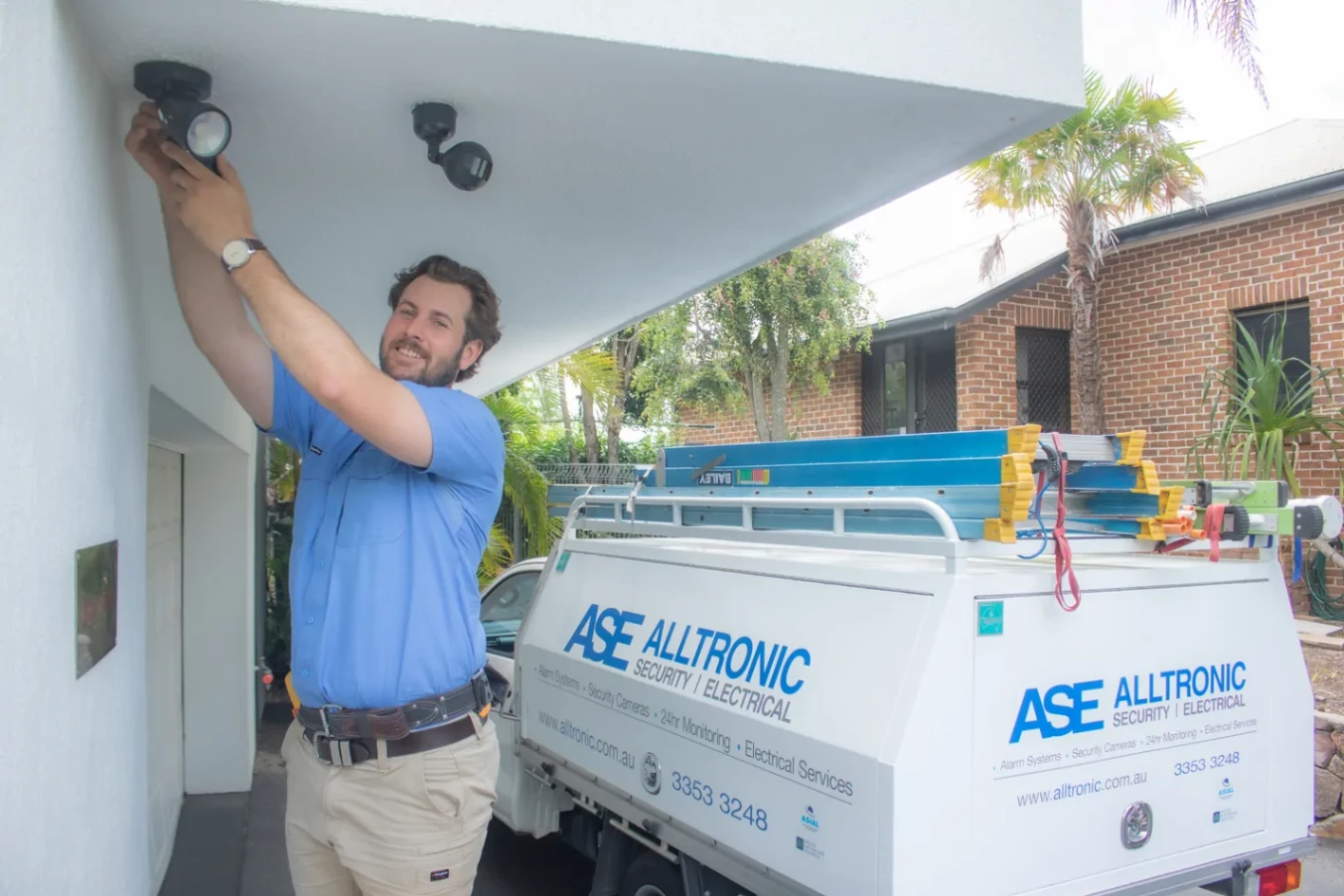Tips for Mounting Security Cameras
When installing security cameras at home or in the workplace, placing them in strategic locations is essential to ensure wide and unobstructed coverage. This will allow for optimal surveillance and clear images. Hiring a professional security or surveillance camera installer will give you the very best results as they have the hands-on experience and training to determine optimal camera placement for your property and security needs. The camera placement will vary based on the type of security camera and the area being monitored, ensuring comprehensive protection for your property, occupants, and belongings.
Security Camera Mounting Tips
If you’re a jack-of-all-trades and a DIY enthusiast, you can mount a security camera yourself as the property owner. However, it’s essential to position and connect the camera accurately to ensure optimal performance and security coverage. If you run into any issues during installation, consider reaching out to a security camera professional to guarantee a proper setup. Important tips when mounting a security camera
- Prime Positions: Include entry points, high-traffic areas, taking into account blind spots around your property, key areas are doorways, windows, and garages.
- Height and Angle: Cameras should be mounted 8 to 10 feet for the best view, it's important to not position your camera too high or too low. To capture movements and faces aim the camera downward
- Secure Mounting: When mounting your camera only use the bracket or wall mount designed for your specific camera weight and height. Secure firmly to prevent the camera from being knocked out of place or tampered with.
- Avoid Obstructions: Ensure the camera’s line of sight is clear of obstacles such as trees, bushes or fences that could block the view, check regularly for obstructions for perfect coverage.
- Weather Protection: Position the camera under eaves or awnings or other weatherproof enclosures for outdoor cameras to protect against harsh elements and minimise exposure.
- Consider Lighting: Avoid mounting cameras directly in front of bright lights or windows, as glare can reduce visibility. If need be, add extra lighting for clearer nighttime vision and footage.
- Wiring and Power Supply: Ensure that cables are properly secured and out of sight to prevent tampering. Ensure you can receive a reliable Wi-Fi signal If the camera is wireless.
- Test the Coverage: Before completing the mounting, test the camera’s view, check for blind spots and adjust the angle to ensure it captures the intended area.
- Privacy: Abide by local laws and regulations regarding surveillance and privacy. Avoid positioning cameras that invade neighbours' privacy.

Why Install a Security Camera?
We all deserve to feel safe whether at home, work or out in public spaces. Security cameras help create a more secure environment, enhance safety, protect people against intruders, and help in preventing theft and vandalism. This makes them an invaluable tool for personal, residential and commercial security. In addition, a security camera can provide valuable support and information should uninvited incidents or criminal activity occur.

References: